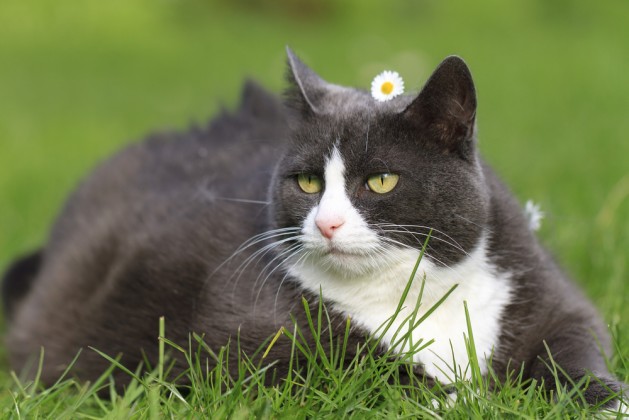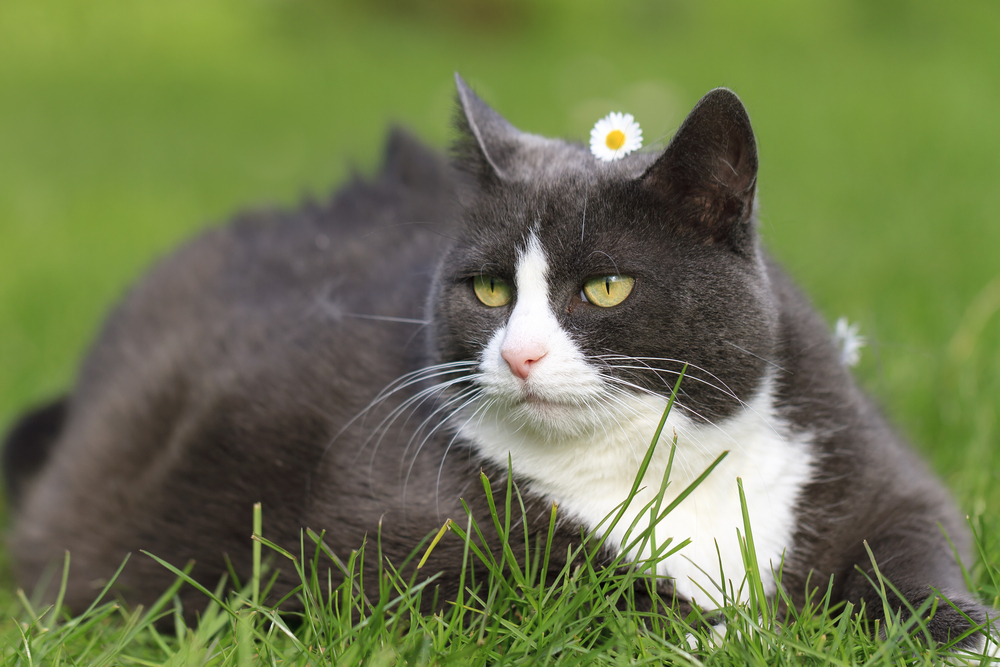
Usually it’s not a big deal if you need to size-up your dog sweaters, and sometimes a little extra weight is fine. But obese pets can experience limited mobility and have trouble grooming themselves, as well as other health issues.
Now, pets aren’t like humans. Humans are responsible for their own lives and choices; sometimes people are heavy and that’s fine. I leave it to other people to determine what’s best for them, and their weight is none of my business.
Pets, on the other hand, don’t make any choices about their health except bad ones like eating garbage or picking fights with wildlife. Your pet exercises and eats how you decide they will.
How do you tell?
First of all, how do you know your pet is overweight? Dogs and cats have a wide range of shapes and sizes, so it can be difficult to determine with a scale, though this list of ideal weight ranges of various breeds is helpful. The best general indicator is if you can only feel your pet’s ribs with effort and they don’t have much of a waist, they’re probably overweight. This is especially true if you’ve noticed some quality of life issues.
If your pet has suddenly gained or lost a significant amount of weight, it’s best to check with your vet to be sure they don’t have a serious medical issue. But if they’ve just become rounder over the years, it’s probably time to change up how much food and exercise you provide.
Food
Some pets will graze and self-regulate their food intake, but most will happily eat all they need and more, especially if they think they’re competing with other animals in the house. It may be convenient for you to have an automatic feeder, but if your pet is overeating, it’s time to get rid of it.
You need to determine what your pet’s caloric needs are, which is best done with the help of a vet. It’s worth noting that the number of calories your pet needs will change depending on age and health. In general, though, a 10-lb. cat needs between 180-200 calories, a 10-lb. dog between 200-275, a 20-lb. dog between 325-400, and a 50-lb dog between 700-900. Check your pet’s food to see how to best portion those calories. Frequent, smaller meals usually work better for weight regulation and to keep your pet from acting like you’re a food-withholding monster.
If you need to change your pet’s diet do it gradually and don’t put them on a starvation diet in hopes that they’ll lose weight faster. It will take several months for your pet to trim down.
Treats
Pets love treats and we love giving them, but if you give your cat 1 oz. of cheese, that’s half their daily calories right there. Sharing a couple table scraps add up. Even treats made for dogs and cats can become a significant source of overfeeding.
If your dog will accept baby carrots, broccoli, cucumber, or celery as a treat, these are good low-calorie alternatives. This list breaks down what fruit and vegetables are and aren’t safe for your dog. Good luck getting a cat to eat broccoli, though.
In many cases, what’s more important than the treat is the attention. If you want to reward your pet, use praise, play, and petting to convey your feelings instead of tossing them some food. Your behavior will guide their behavior. It will take some getting used to, but they’ll get the idea.
Exercise
Dogs love walks, but sometimes that means a slow amble with plenty of pauses. You should aim for a brisk walking pace, about 12-15 minutes per mile, for a significant portion of a 30-minute walk. The rest of the time you can take to smell the roses. This, of course, depends on your dog’s breed, age, and specific needs.
You should check with your vet about the best way to get your dog’s necessary exercise. Too much, too fast could do more harm than good. If you have access to a place where your dog can swim, it’s a great way for it to workout with less joint stress.
Cats, though, cats don’t go for walks. They don’t go to the Y to get their laps in. They’re wired differently than dogs and humans; they aren’t built for sustained endurance exercise. You need to be creative.
Some cats will respond well to rotating where their food bowl is, obligating them to move through your house to find it. At the very least, don’t keep your cat’s bowl right next to their bed. Playing is great way to get your cat to move and socialize with them. Laser pointers, feathers on sticks, or cloth mice are all great ways to entice your cat into moving its fuzzy behind.



